 My experience with Breeding Bird Censuses are most birds are identified by song. However, as the breeding season progresses I am detecting more birds by visual ID. Today that threshold has been reached. There really were not a lot of birds singing, a product of fledged young and moving family units. White-eyed Vireos continue to be vocal along with a few Painted & Indigo Buntings. Golden-cheeked Warblers have been quiet for two weeks now, yet I still see individuals at Twin Falls.
My experience with Breeding Bird Censuses are most birds are identified by song. However, as the breeding season progresses I am detecting more birds by visual ID. Today that threshold has been reached. There really were not a lot of birds singing, a product of fledged young and moving family units. White-eyed Vireos continue to be vocal along with a few Painted & Indigo Buntings. Golden-cheeked Warblers have been quiet for two weeks now, yet I still see individuals at Twin Falls.I did hear for the first time on this survey an Eastern Wood Pewee singing at Tobacco Creek and another bird sited at East Park Boundary. The Acadian Flycatcher nest #2 at Tobacco Creek Seep was still active with a female  flying onto the nest as I arrived. By now this bird should have young. The Blue Grosbeak nest at the Twin Falls and Pedernales River location has two 14 day old young in the nest. Photo above right. Both parents were actively feeding them. One Rufous-crowned Sparrow continues to sing at Twin Falls.
flying onto the nest as I arrived. By now this bird should have young. The Blue Grosbeak nest at the Twin Falls and Pedernales River location has two 14 day old young in the nest. Photo above right. Both parents were actively feeding them. One Rufous-crowned Sparrow continues to sing at Twin Falls.
 flying onto the nest as I arrived. By now this bird should have young. The Blue Grosbeak nest at the Twin Falls and Pedernales River location has two 14 day old young in the nest. Photo above right. Both parents were actively feeding them. One Rufous-crowned Sparrow continues to sing at Twin Falls.
flying onto the nest as I arrived. By now this bird should have young. The Blue Grosbeak nest at the Twin Falls and Pedernales River location has two 14 day old young in the nest. Photo above right. Both parents were actively feeding them. One Rufous-crowned Sparrow continues to sing at Twin Falls.I walked upon a Rock Squirrel, near Tobacco Creek. It was in no hurry to hide so I was able to take some photos of it resting on a rock and taking a dust bath. Looks like I have one more week of surveying to follow-up on the two active nests. I hope to be back the Fourth of July.

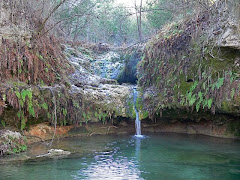
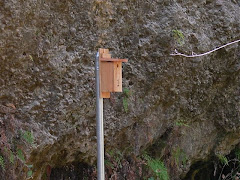
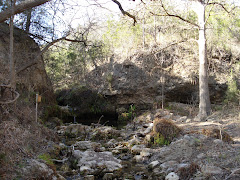
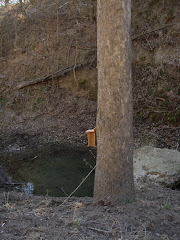
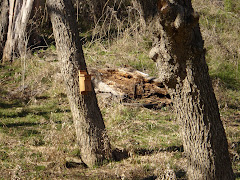




No comments:
Post a Comment